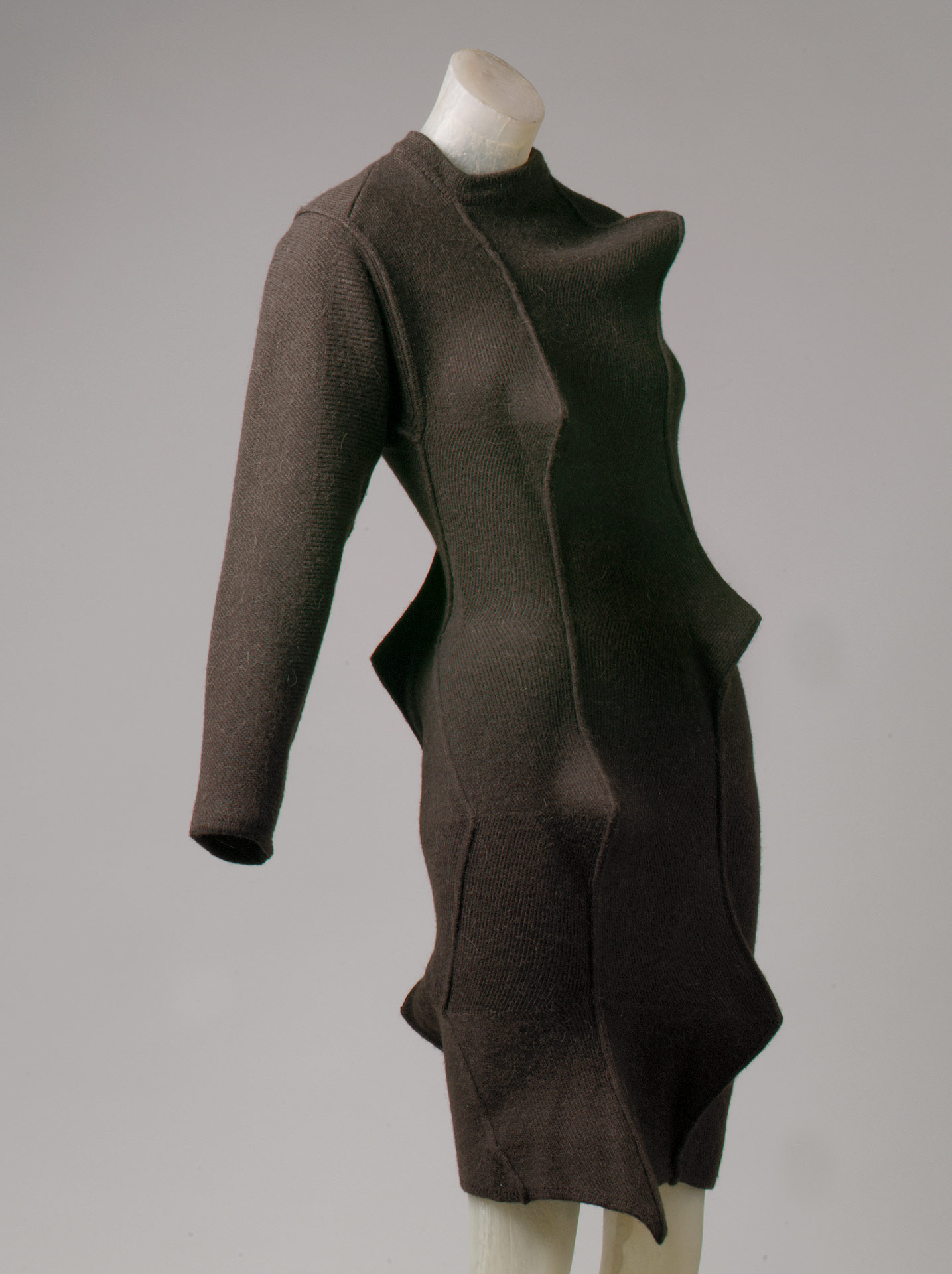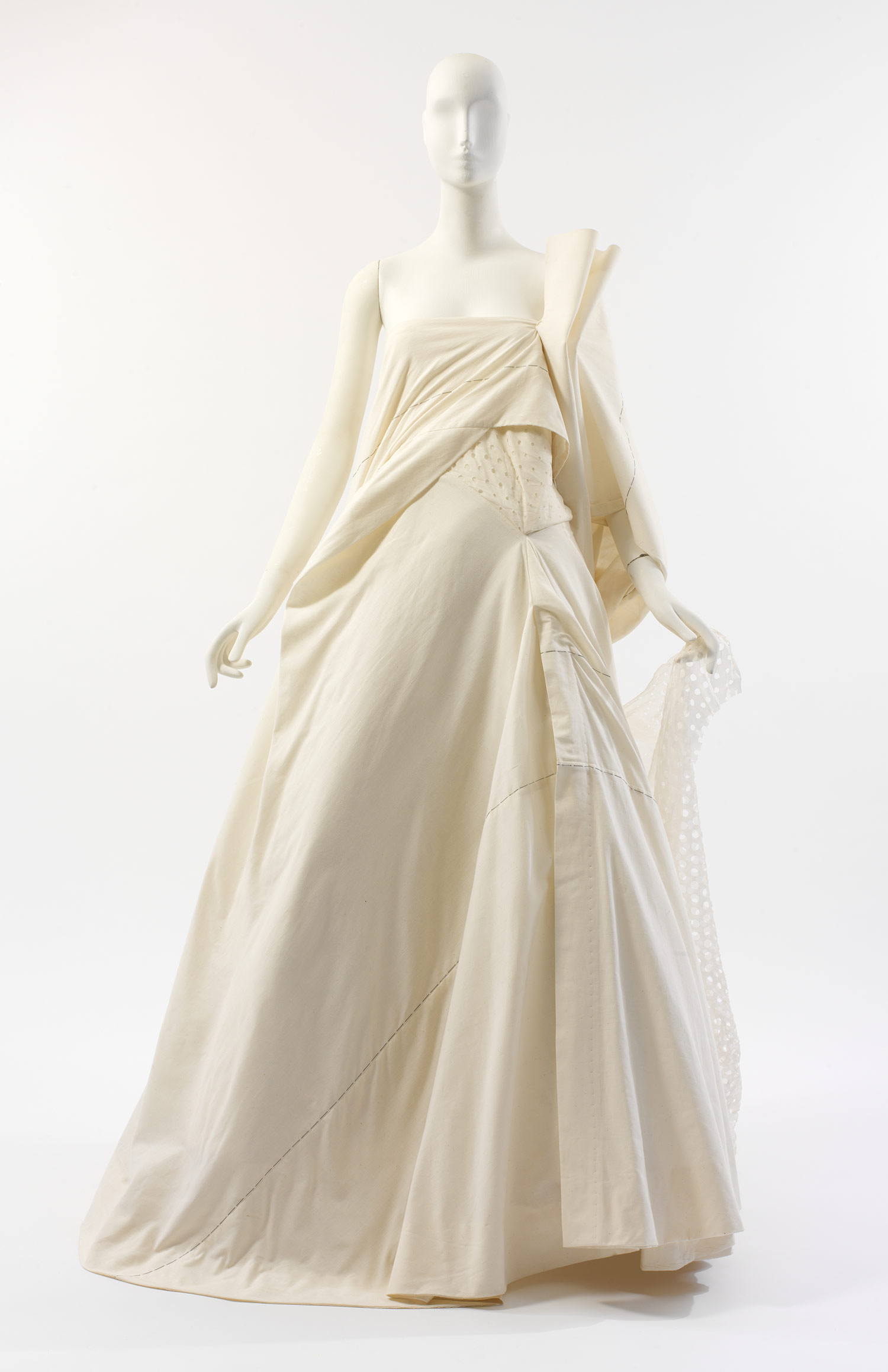Japan Fashion Now
From September 16, 2010, to January 8, 2011
Museum at the Fashion Institute of Technology
Seventh Avenue at 27 Street
New York City 10001-5992
www.fitnyc.edu
Emerging from an economic and industrial boom in Japan in the 1960s, Japanese artists, designers, and architects found inspiration in the fusion between American pop culture and Japan's explosive consumer technologies. Placing great emphasis on an admiration for traditional Japanese art as well as the forms and ideologies of modernism via channels of fiber technology, visual imagery, and three-dimensional sculpture, Issey Miyake, Rei Kawakubo, and Yohji Yamamoto can be credited with the creation of the Japanese aesthetic in global fashion.
While these designers each have a unique perspective on cloth construction, they share a love for artistic collaboration in the development of their collections, marketing, and image. A distinct manufactured aesthetic is exaggerated, even hyperbolic, in the contemporary Japanese fashion house. This is particularly evident in the careers of Miyake and Kawakubo—the former has recruited a variety of textile and sculptural artists such as Yasumasa Morimura, Cai Guoqiang, painter Tadanori Yokoo, and architect Tadao Ando, and the latter partnered with Takao Kawasaki, an architect who conceived the majority of the designer's early Comme des Garçons boutique.


Kawakubo's empire combines an industrially inspired socialist work ethic with a nearly fanatical desire to purvey clothing as an ever-changing product of its sociocultural environment, citing both Neo-Realism and Futurism in runway collections and advertising. Miyake forms garments that celebrate the vitality and movement of the human body, particularly referencing Sudanese, Japanese, and American modes and overlaying them with the dictates of couture tailoring to communicate a liberated global aesthetic. Yamamoto exhibits the most loyalty to Japanese cloth traditions, famed for his 1990s kimono-inspired trenchcoats and shirts. Though clearly influenced by the pure geometric forms of such indigenous garments, Yamamoto finds methods of incorporating contemporary sportswear constructions and finishing details into his designs to evoke a postmodern street chic, imbued with functions of protection and durability.
Tools of Design
An interest in the evolution of fiber technology and a devotion to tonal and textural eclecticism prompts these designers to repeatedly emphasize the importance of their raw materials. Aspirations of continual movement in both fabric and structure governed the conception of the iconic pleat-setting of Miyake's "Pleats Please" series, the enigmatic twisting, piecing, and drapery of Yamamoto's designs, and the planar manipulation of Kawakubo's shrouding, texturing, and layering techniques. While Miyake has consistently employed various heat-embossing and synthetic coating textile processes to effect more modern sculptural forms, Kawakubo nods to the romantic subtleties of historic fashion, yet champions cold synthetic fibers in her executions. Most emblematic of this tendency toward ironic juxtaposition, the "lace" sweaters of the famed Comme des Garçons fall/winter 1982–83 collection featured black wool knits distressed with gaping holes to invoke the composition of lace. While Yamamoto often experiments with innovations in technical textiles and new synthetics, he also fondly executes his designs with unconventional natural materials. A vest and skirt ensemble made entirely of hinged wood slats from his fall/winter 1991 collection demonstrates a dedication to communicating the raw visual distinctions of planar form.
The New Traditions of Japanese Fashion
Miyake, Kawakubo, and Yamamoto have all contributed to the rise of Japanese fashion by communicating its aesthetic to the global market, thereby fostering an awareness of peer and successive generations of avant-garde Japanese creators such as Junya Watanabe, Junko Koshino, and Junichi Arai. Each is celebrated for fusing age-old couture tailoring with Japanese design ethos. Though the respective collections of these designers are often inextricably linked to their derivations of or deviations from Western fashion, each has used Japan's rich visual heritage as a foundation for aesthetic, social, and sometimes political collages of cultures worldwide. Much like the costumes of theJapanese Noh, the runway designs of Miyake, Kawakubo, and Yamamoto strive toward theatricality, visual splendor, and organic movement.
VIDEO: http://www.youtube.com/user/TheMuseumatFIT?feature=mhum
Source:Miyake, Kawakubo, and Yamamoto: Japanese Fashion in the Twentieth Century | Thematic Essay | Heilbrunn Timeline of Art History | The Metropolitan Museum of Art
For more info: http://fitnyc.edu/8726.asp















